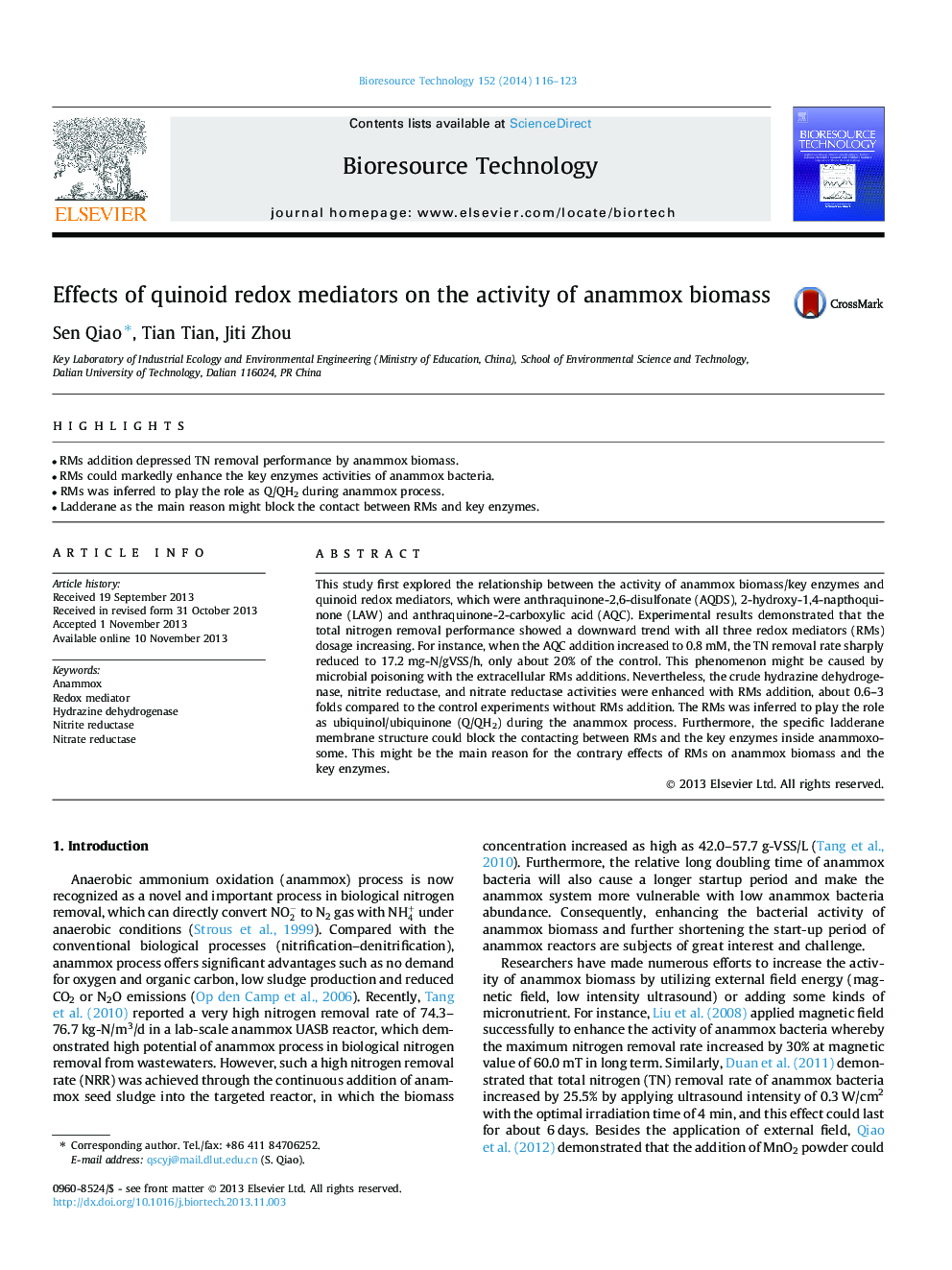| Article ID | Journal | Published Year | Pages | File Type |
|---|---|---|---|---|
| 7079138 | Bioresource Technology | 2014 | 8 Pages |
Abstract
This study first explored the relationship between the activity of anammox biomass/key enzymes and quinoid redox mediators, which were anthraquinone-2,6-disulfonate (AQDS), 2-hydroxy-1,4-napthoquinone (LAW) and anthraquinone-2-carboxylic acid (AQC). Experimental results demonstrated that the total nitrogen removal performance showed a downward trend with all three redox mediators (RMs) dosage increasing. For instance, when the AQC addition increased to 0.8Â mM, the TN removal rate sharply reduced to 17.2Â mg-N/gVSS/h, only about 20% of the control. This phenomenon might be caused by microbial poisoning with the extracellular RMs additions. Nevertheless, the crude hydrazine dehydrogenase, nitrite reductase, and nitrate reductase activities were enhanced with RMs addition, about 0.6-3 folds compared to the control experiments without RMs addition. The RMs was inferred to play the role as ubiquinol/ubiquinone (Q/QH2) during the anammox process. Furthermore, the specific ladderane membrane structure could block the contacting between RMs and the key enzymes inside anammoxosome. This might be the main reason for the contrary effects of RMs on anammox biomass and the key enzymes.
Related Topics
Physical Sciences and Engineering
Chemical Engineering
Process Chemistry and Technology
Authors
Sen Qiao, Tian Tian, Jiti Zhou,
